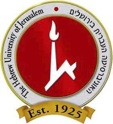Dr. Ayelet Atkins
The unique structure-mechanics and response to load of acellular bone
One of the basic paradigms of vertebrate bone physiology is that bone contains cells within its matrix (so-called osteocytes) which are active metabolically, and serve as ‘load sensors’ to activate the repair process in areas in which damage such as micro-cracks has accumulated, and change bone morphology to adapt to changing loading conditions. It is therefore very surprising that bones of almost all advanced teleost fish (and thus the majority of vertebrates) do not contain cells. Equally intriguing is the fact that the bones of basal fish species do contain osteocytes, thus acellularity is an evolution-derived property. Considering the high level of interest in the structure- mechanics of bone and its ability to adapt to load, it is extremely surprising that almost nothing is known about structure-function, material properties and load adaptation of acellular bone.
The species richness of acellular-boned fishes and the surety that their bones are successfully handling — often for long lifetimes — strain magnitudes similar to those of other vertebrate skeletons tells us that their bone material cannot be simply considered as mammalian bone but without cells. We therefore hypothesize that acellular bone of advanced teleosts is structurally and compositionally different from cellular bone. We further hypothesize that acellularity contributes to bone some unique, currently obscure mechanical advantages.
In order to investigate this hypothesis, we plan to carry out a detailed structural investigation of several species of acellular and cellular fish bone. To this end we will use such techniques as light microscopy and electron microscopy, infrared spectroscopy and microCT scanning. We will also determine their basic mechanical properties, using several advanced techniques such as micro-mechanical testing combined with electronic speckle pattern interferometry and nanoindentation. We will also use a novel system to controllably load acellular bones in vivo, and investigate their response in terms of modeling and remodeling. All results will be compared between cellular and acellular fish bones.
Results will contribute to our understanding of basic bone biology, and allow us to gain unique perspectives on the role of osteocytes in mammalian bone. The results will also be of interest to researchers of biomaterials, and could inspire novel biomimetic materials.
Collaboration with Maria Laura
Bil fishes are characterized by a unique prominent elongated maxillary extension, the ‘bill’. The function of the bill is still debated, however it is probably used for defense, feeding or drag reduction, or possibly all three. Regardless of the precise function of the bill, its position and shape, coupled with the size and speed these fishes reach (some surpass 500 kg and 80 km/hr (20 m s-1) suggest it must undergo rather high loads. We recently carried out a study of the bone of the bill in 5 species of billfishes: blue marlin (Makaira nigricans), white marlin (Tetrapturus albidus), Sailfish (Istiophorus albicans), Shortbill spearfish (Tetrapturus angustirostris) and Swordfish (Xiphias gladius). Examination of transverse cross-sections these bills (maxillary bones), taken at several locations along then, of all 5 species, using light and scanning electron microscopy, revealed an abundance of remodeled bone areas, similar to, but more irregular than secondary osteons, completely devoid of osteocytes but with many irregularly placed cavities that may be blood channels or some other kind of porosity as well as the central ‘Haversian canal’.


